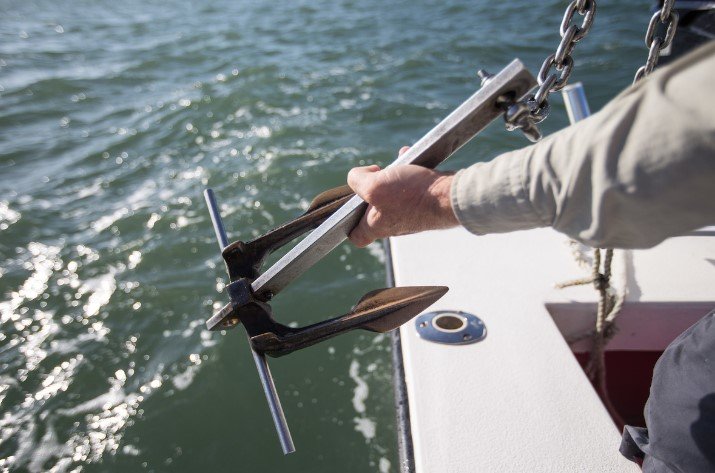
What is a Boat Anchor?

A boat anchor is a crucial piece of equipment used in boating to secure a vessel in place by embedding into the bottom of a body of water. It serves as a temporary hold, preventing the boat from drifting away due to wind, currents, or waves. Anchors come in various types and sizes, each designed for specific conditions and boat sizes.
Importance of Choosing the Right Boat Anchor
Choosing the appropriate boat anchor is essential for several reasons:
Safety
A reliable anchor ensures the safety of both the boat and its occupants. It prevents the vessel from drifting into dangerous areas, such as shallow waters, rocky shores, or other boats.
Stability
An anchor provides stability to the boat, especially during adverse weather conditions. It keeps the vessel steady, reducing rocking and rolling movements that can cause discomfort or seasickness.
Holding Power
The holding power of an anchor refers to its ability to grip the bottom and withstand external forces. A high-quality anchor with adequate holding power ensures that the boat remains securely in place, even in strong winds or currents.
Factors to Consider When Choosing a Boat Anchor
Several factors should be taken into account when selecting a boat anchor:
Boat Size and Weight
The size and weight of the boat influence the choice of anchor. Larger and heavier boats require anchors with greater holding power to keep them securely in place.
Bottom Type
The type of bottom where the boat will anchor affects the anchor’s effectiveness. Different anchors perform better on sand, mud, gravel, or rocky bottoms.
Holding Power
Consider the holding power of the anchor, which is determined by its design and construction. A higher holding power ensures better anchoring performance in challenging conditions.
Anchor Material
Anchors are made from various materials, including steel, aluminum, and galvanized iron. The material affects the anchor’s durability, corrosion resistance, and weight.
Types of Boat Anchors
Several types of boat anchors are available, each suited for different conditions and boat sizes:
Plow Anchors
Plow anchors, also known as CQR anchors, are popular for their versatility and holding power. They work well in various bottom types and provide reliable holding in most conditions.
Fluke Anchors
Fluke anchors, such as the famous Danforth anchor, feature flat, triangular-shaped flukes that dig into the bottom for secure holding. They are lightweight and ideal for small to medium-sized boats.
Danforth Anchors
Danforth anchors, with their two sharp pivoting flukes, offer excellent holding power in sandy or muddy bottoms. They are lightweight and easy to store but may struggle in rocky or weedy conditions.
Mushroom Anchors
Mushroom anchors have a round, mushroom-shaped design, making them suitable for soft, muddy bottoms. They are commonly used for mooring or anchoring smaller boats in calm waters.
Grapnel Anchors
Grapnel anchors consist of multiple tines or hooks that grab onto underwater structures or debris. They are compact and portable, making them ideal for temporary anchoring or as a secondary anchor.
How to Properly Set a Boat Anchor
Properly setting a boat anchor is essential for reliable holding. Follow these steps for effective anchoring:
Choosing the Right Location
Select a suitable anchorage location with adequate depth and protection from wind, waves, and currents. Avoid areas with underwater obstacles or hazards.
Preparing the Anchor and Rode
Attach the anchor securely to the rode (anchor line) using appropriate knots or shackles. Ensure the rode is of sufficient length to reach the bottom with extra allowance for tidal changes.
Setting the Anchor
Lower the anchor slowly to the bottom while paying out the rode. Allow the anchor to settle naturally, then apply reverse thrust to set it firmly into the bottom.
Confirming the Anchor’s Set
Once the anchor is set, slowly back down on the anchor line to test its holding power. Confirm that the boat remains in place and the anchor does not drag.
Maintenance and Care of Boat Anchors
Regular maintenance is crucial to ensure the reliability and longevity of boat anchors:
Cleaning
After each use, rinse the anchor with fresh water to remove salt, mud, or debris. Inspect the anchor for signs of corrosion or damage, and clean it thoroughly if necessary.
Inspection
Periodically inspect the anchor, rode, and any associated hardware for wear, corrosion, or weakening. Replace any worn or damaged components to maintain optimal anchoring performance.
Storage
Store the anchor in a dry, well-ventilated location away from moisture and corrosive elements. Proper storage helps prevent rust and extends the lifespan of the anchor.
Conclusion
Choosing the right boat anchor is essential for safe and enjoyable boating experiences. Consider factors such as boat size, bottom type, and holding power when selecting an anchor, and follow proper anchoring techniques for reliable performance. Regular maintenance and care will ensure that your anchor remains dependable and ready for use whenever needed.
FAQs
- How do I determine the right size anchor for my boat?
- The anchor size should be appropriate for your boat’s size and weight. Consult anchor sizing charts or manufacturers’ recommendations for guidance.
- Can I use the same anchor for different bottom types?
- While some anchors perform well in various bottom types, it’s essential to choose an anchor suitable for the predominant bottom conditions in your boating area.
- What should I do if my anchor gets stuck?
- If your anchor becomes stuck, avoid using excessive force that could damage the anchor or boat. Try gently rocking the boat or pulling from different angles to dislodge the anchor.
- How often should I inspect my boat anchor?
- It’s recommended to inspect your boat anchor before each use and conduct a more thorough inspection periodically, especially after extended use or exposure to harsh conditions.
-
Can I leave my anchor deployed overnight?
- While it’s common to anchor overnight, ensure that your anchor is securely set and that weather conditions are suitable for anchoring. Monitor your anchor’s holding and adjust as necessary to ensure safety.



